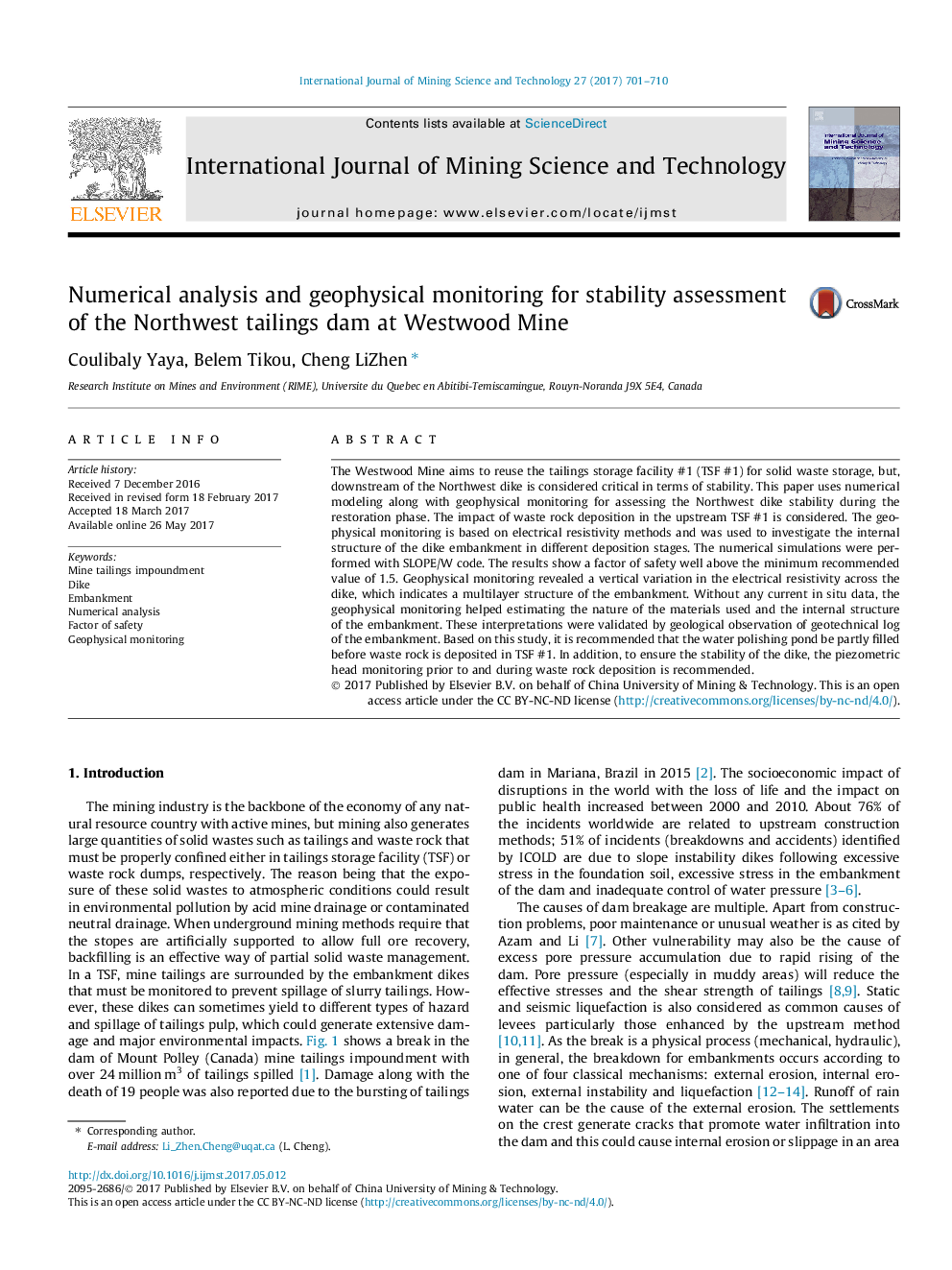| Article ID | Journal | Published Year | Pages | File Type |
|---|---|---|---|---|
| 4921841 | International Journal of Mining Science and Technology | 2017 | 10 Pages |
The Westwood Mine aims to reuse the tailings storage facility #1 (TSF #1) for solid waste storage, but, downstream of the Northwest dike is considered critical in terms of stability. This paper uses numerical modeling along with geophysical monitoring for assessing the Northwest dike stability during the restoration phase. The impact of waste rock deposition in the upstream TSF #1 is considered. The geophysical monitoring is based on electrical resistivity methods and was used to investigate the internal structure of the dike embankment in different deposition stages. The numerical simulations were performed with SLOPE/W code. The results show a factor of safety well above the minimum recommended value of 1.5. Geophysical monitoring revealed a vertical variation in the electrical resistivity across the dike, which indicates a multilayer structure of the embankment. Without any current in situ data, the geophysical monitoring helped estimating the nature of the materials used and the internal structure of the embankment. These interpretations were validated by geological observation of geotechnical log of the embankment. Based on this study, it is recommended that the water polishing pond be partly filled before waste rock is deposited in TSF #1. In addition, to ensure the stability of the dike, the piezometric head monitoring prior to and during waste rock deposition is recommended.
